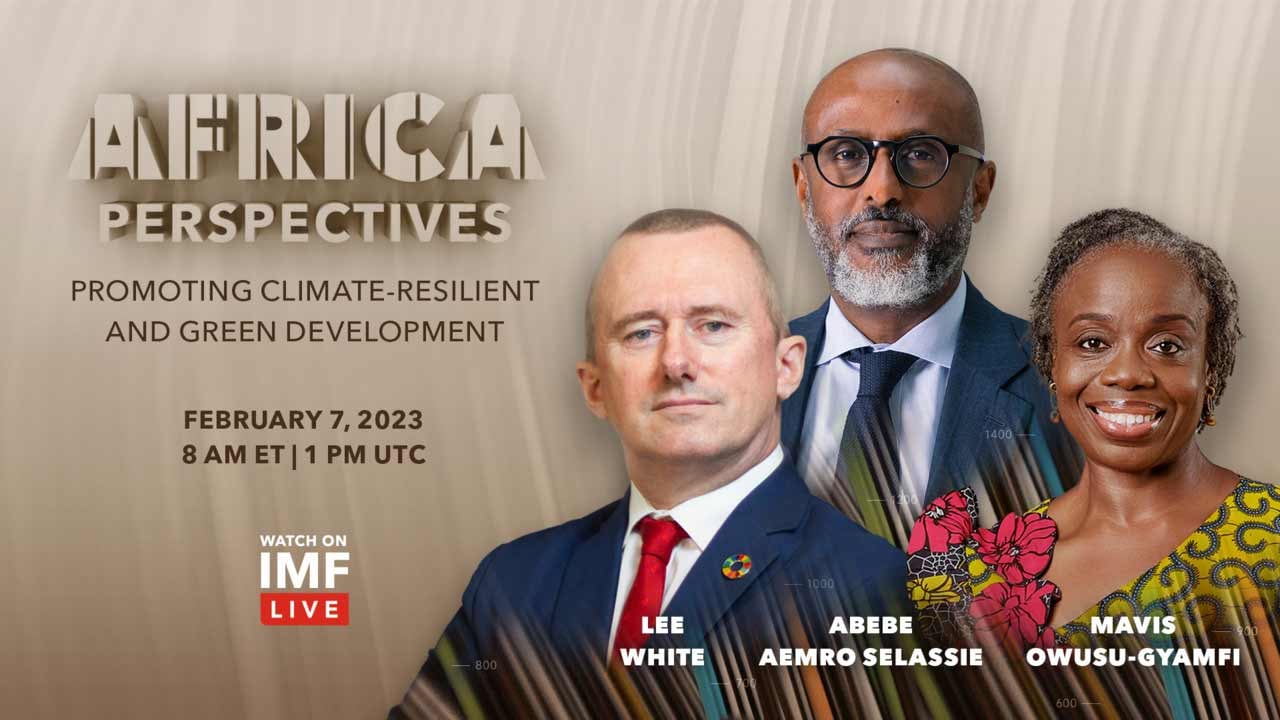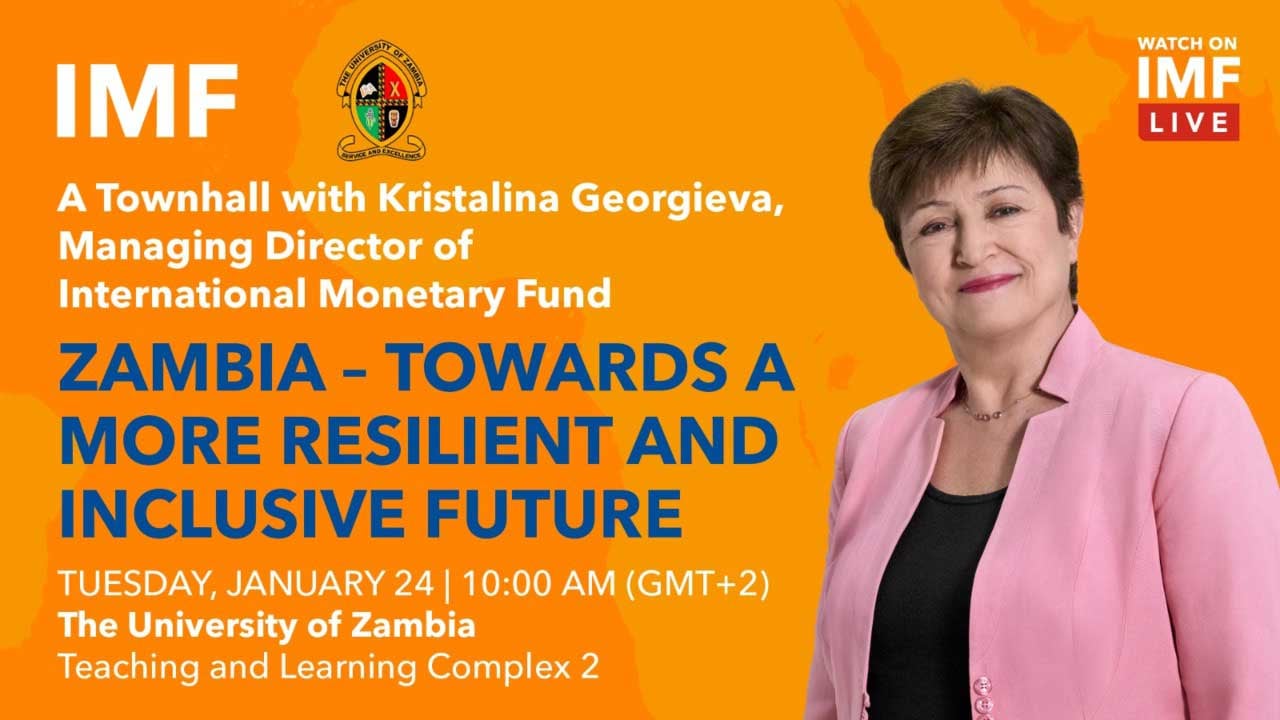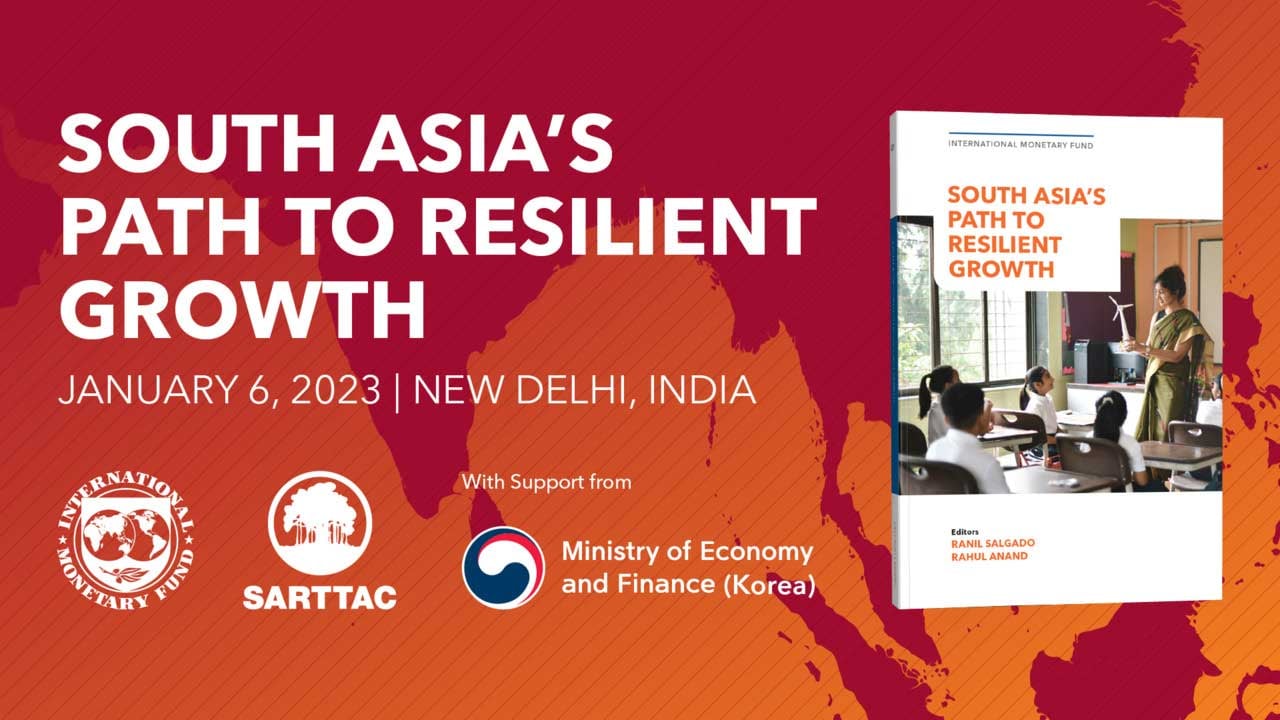Low-Income Countries

What has the IMF done to help low-income countries during the coronavirus pandemic?
The IMF has acted with unprecedented speed and scale to support low-income countries during the pandemic. The Fund provided financial support to 53 of 69 eligible low-income countries in 2020 and in the first half of 2021, with about US$14 billion disbursed as zero percent interest rate loans from the Poverty Reduction and Growth Trust.
Most of this support was through the Fund’s emergency financing instruments—the Rapid Credit Facility (RCF) and Rapid Financing Instrument (RFI)—which provide immediate, one-time disbursements to countries facing urgent balance of payments needs. The Fund was able to respond to a record number of requests for financial assistance through a series of temporary access limit increases to the RCF and RFI, and temporary increases in the Poverty Reduction and Growth Trust (PRGT) overall access limits.
Abebe Aemro Selassie to Retire as Director of the African Department at the IMF
Kristalina Georgieva, Managing Director of the International Monetary Fund (IMF), announced today that Mr. Abebe Aemro Selassie intends to retire as Director of the African Department (AFR) on May 1, 2026.
IMF Executive Board Approves Extension of the Extended Fund Facility, Extended Credit Facility, and Resilience and Sustainability Facility Arrangements with Benin
: The Executive Board of the International Monetary Fund approved the Beninese authorities’ request for an extension of the country’s Extended Fund Facility (EFF), Extended Credit Facility (ECF), and Resilience and Sustainability Facility (RSF) Arrangements until February 28, 2026.
IMF Executive Board Concludes 2025 Article IV Consultation with Albania
The Executive Board of the International Monetary Fund (IMF) completed the Article IV Consultation with Albania and considered and endorsed the staff appraisal without a meeting on a lapse-of-time basis
IMF Staff Reaches Staff Level Agreement on Egypt’s Fifth and Sixth Review Under the Extended Fund Facility and First Review Under the Resilience and Sustainability Fund
An IMF team and the Egyptian authorities have reached staff level agreement on the fifth and sixth reviews under the Extended Fund Facility (EFF) arrangement and the first review under the Resilience and Sustainability Facility (RSF).
IMF Staff Statement on El Salvador
Mr. Torres, Mission Chief for El Salvador, issued a statement following in person and virtual discussions over the past months with the Salvadoran authorities on the second review of the 40-month Extended Fund Facility (EFF) Arrangement.
IMF Executive Board Completes the Second Review under the Extended Credit Facility Arrangement and the First Review under the Resilience and Sustainability Facility Arrangement for the Democratic Republic of the Congo
The Executive Board of the International Monetary Fund (IMF) completed the second review under the Extended Credit Facility (ECF) Arrangement and the first review under the Resilience and Sustainability Facility (RSF) Arrangement for the Democratic Republic of the Congo (DRC), both approved on January 15, 2025 (see PR 25/003).
New Skills and AI Are Reshaping the Future of Work
Policy choices will determine whether workers and firms are adequately prepared for the AI revolution
Top 10 Blogs of 2025
Debt, Stablecoins, AI, and Global Economy’s New Era Drew Blog Readers
Top Five IMF Blog Charts of 2025
Chart of the Week visuals illustrate major developments during a year of uncertainty and resilience
How Stablecoins Can Improve Payments and Global Finance
New technology can foster innovation and financial inclusion, or cause fragmentation and turbulence in many countries
Better Economic Measurement Is About Wiser Use, Not Just More Data
Statistics are a means, not an end, that should serve the public by helping us see the world more clearly and make better decisions
Industrial Policy Can Lift Productivity—but Comes With Risks and Trade-offs
Potential gains in targeted sectors and overall are not guaranteed and depend on careful policy design and implementation
The 2025 Review of The Short-Term Liquidity Line
The Short-term Liquidity Line (SLL), introduced in 2020, was designed as a revolving liquidity backstop for countries with very strong economic fundamentals and institutional policy frameworks. It aims to address short-term, moderate balance of payments needs arising from capital flow volatility, helping to prevent emerging liquidity pressures from escalating into broader macroeconomic or financial instability. However, uptake has been limited, with only one arrangement for Chile in 2022, which was canceled shortly thereafter in favor of a Flexible Credit Line (FCL).
The Chair’s Summing Up Independent Evaluation Office—IMF Advice on Fiscal Policy Executive Board Meeting December 4, 2025
The Executive Board discussed the Independent Evaluation Office’s review of IMF fiscal policy advice from 2008 to 2023. Directors welcomed the evaluation and noted the Fund’s progress in adapting its guidance to changing global conditions. The discussion highlighted the evolution from a narrow focus on debt sustainability toward a more integrated approach that balances fiscal sustainability, output stabilization, and long-term growth. Directors acknowledged improvements in analytical tools, including debt sustainability frameworks and fiscal risk assessments, while emphasizing the need for clearer articulation of fiscal stance and better integration of long-term spending priorities. The Board reaffirmed its commitment to transparency and consistency in providing candid, country-specific advice to help members navigate fiscal challenges.
Statement by the Managing Director on the Independent Evaluation Office Report on IMF Advice on Fiscal Policy Executive Board Meeting December 4, 2025
The Managing Director welcomes the Independent Evaluation Office’s assessment of IMF fiscal policy advice over the past 15 years. The evaluation highlights the Fund’s evolution from a narrow focus on debt sustainability to a more balanced framework that integrates output stabilization, fiscal sustainability, and long-term growth objectives.
Gulf Cooperation Council (GCC)— Enhancing Resilience to Global Shocks: Economic Prospects and Policy Challenges for the GCC Countries
Despite the challenging external environment, the GCC economies have been resilient. Non-hydrocarbon activity has remained robust amid strong domestic demand supported by the reform momentum, limited spillovers from regional, as well as the modest direct impact of higher U.S. tariffs given the exemption of energy products and limited trade ties with the U.S. While external balances narrowed amid oil production cuts and robust imports, the external positions remain overall strong. The economic outlook remains favorable but risks are tilted to the downside amidst elevated global uncertainty. Economic activity will be supported by the unwinding of oil production cuts, the expansion of natural gas production, and strong reform and project implementation facilitated by ample policy buffers. External buffers would remain comfortable despite narrower current account balances driven by higher imports. The near-term risks to the outlook are tilted to the downside, as oil prices could decline and financial conditions tighten amid high uncertainty. Over the medium term, ongoing global structural shifts pose two-sided risks for the GCC economies.
Fifteenth Periodic Monitoring Report on the Status of Managment Implementation Plans in Response to Board-Endorsed IEO Recommendations
The 15th Periodic Monitoring Report (PMR) on the Status of Management Implementation Plans (MIPs) in Response to Board-endorsed Independent Evaluation Office (IEO) Recommendations assesses the progress made over the past year on 48 actions contain in 11 MIPs. Over the past year, substantial progress has been made in implementing management actions with the closure of 24 actions, and these closed actions are a balance of strategic and operational actions.
Extension of the Period for Consent to Increase Quotas under the Sixteenth General Review of Quotas and to the NAB Rollback
On November 7, 2025, the IMF’s Executive Board approved another six-month extension of the period to consent to the quota increase and to the New Arrangements to Borrow (NAB) rollback under the Sixteenth General Review of Quotas (GRQ), through May 15, 2026. Such extension also extends the period of consent for quota increases under the 14th GRQ. The previous deadline was due to expire on November 15, 2025. However, the Board of Governors Resolution 79-1 provides that the Executive Board may extend the period for consent as it may determine.
A Silver Lining? The European Energy Crisis through the Lens of Directed Technical Change
This paper examines how productivity dynamics and, as a consequence, potential output, are affected by energy price shocks. We do this through the lens of a model of endogenous technical change where firms adjust their investment in non-energy productivity and energy productivity in reaction to the economic environment. Higher energy prices prompt a shift in investment from enhancing non-energy (capital and labor) productivity to improving energy efficiency. The resulting gains in energy efficiency act as an important macroeconomic buffer, but cannot fully offset the adverse input price effect and the transitional cost of shifting investment away from non-energy productivity. We thus find that the change in European energy prices following the 2022 shock reduces the level of euro area potential GDP by 0.8 percent by 2027. The impact on potential growth is temporary, and will have dissipated by that time. Energy efficiency itself is projected to rise by about three percent, offering a silver lining to the crisis. We estimate that the output effect would have been around two-thirds larger had energy efficiency not cushioned the impact of the price shock.
The Nuanced Role of Government Credit in Monetary Policy Transmission
We investigate the role of government credit in monetary policy transmission, using detailed credit registry data from Brazil. We find that government direct credit can effectively support small and medium-sized enterprises (SMEs) in a tight monetary policy environment, aligning with developmental objectives. But it comes at the cost of diminishing the overall effectiveness of monetary policy transmission. We also uncover complexities introduced by government-subsidized lending, where the impact of monetary policy transmission is influenced by factors such as credit market segments, lending relationships, and prevailing monetary policy conditions. These insights provide valuable guidance for policymakers on the transmission of monetary policy and the trade-offs involved in government credit programs.
The Economic Implications of the Energy Transition in Asia-Pacific
This paper examines the economic effects of the global energy transition and the large uncertainty surrounding future fossil fuel demand on countries in the Asia-Pacific region. Under the paper’s baseline, coal demand is expected to shrink by 15 percent by 2035, although depending on global policy ambition and technological uptake, the decline could be as large as 45 percent. Model simulations indicate that one-third of global coal capital stock and one-quarter of Asia-Pacific coal capital stock could become stranded if the speed of the transition is underestimated. By contrast, global natural gas faces both upside and downside risks: when energy policy targets coal alone, natural gas extraction benefits, prompting an 18 percent rise in capital stock, whereas a fuel-agnostic transition would reduce gas capital stock by 16 percent. Impacts differ across countries, with high-cost coal exporters facing early losses, low-cost producers potentially gaining market share, and some gas exporters benefiting under select scenarios. At the same time, new growth opportunities will emerge for countries with strong critical mineral endowments and green energy potential.
The Integration of Global Value Chain in the EU: Stylized Facts and Drivers
This paper examines EU global value-chain (GVC) integration and analyzes its drivers using machine learning models, with case studies of Portugal and Belgium. GVC participation appears to boost productivity and technology upgrading, but also brings concentration risks in the current environment. Results indicate labor cost, labor productivity and human capital as key drivers, supported by infrastructure, manufacturing base, and governance quality. Portugal remains downstream, constrained by low high-tech intensity, while Belgium is highly integrated but exposed to sectoral shocks. Strengthening the EU single market, capital-market integration, and individual countries’ investment in skills, innovation, and diversification would bolster resilience while preserving the benefits of openness.
Stuck in the Middle with You? An Assessment of Income Dynamics in Indonesia
The middle class can play a pivotal role as a growth driver in achieving Indonesia’s Golden Vision of becoming a high-income country by 2045. However, it remains narrow, at under 20 percent of the total population. It is also highly vulnerable, given a waning purchasing power, and unfavorable labor market dynamics. In contrast with the steady progress of the bottom half of the income distribution, the middle-class share has declined since 2019, driven, inter alia, by labor market shifts toward informality, falling real incomes, pandemic scarring. Reversing this trajectory requires broad-based structural reforms focused on revitalizing private-sector led growth, including investment to create formal sector jobs, aligning education with labor market needs and develop skills to raise economic sophistication, and enhancing productivity and resilience. Reforms that enhance the ease of doing business, such as reducing regulatory barriers and uncertainty and improving governance, can help facilitate convergence to high-income status and benefit the middle class.
Cyclical Inequality in the Cost of Living and Implications for Monetary Policy
This paper documents that households with higher marginal propensities to consume (MPCs) tend to consume goods with more flexible prices. Consequently, they face more cyclical and volatile inflation and experience higher inflation following an expansionary monetary policy shock. We embed this MPC-price stickiness relationship into a tractable multi-sector Two-Agent New Keynesian (TANK) model and analytically demonstrate that it dampens the effectiveness of monetary policy, reducing its efficacy by about 15% relative to a benchmark model with homogeneous consumption baskets. Introducing heterogeneous baskets also generates an inherently inefficient flexible-price equilibrium, which gives rise to a novel trade-off between stabilization and redistribution. The optimal monetary policy therefore differs qualitatively from the standard TANK policy prescription.
Promoting Climate-Resilient and Green Development in Africa | Africa Perspectives
A conversation on how sub-Saharan Africa can promote climate-resilient and green development. African Department director Abebe Aemro Selassie hosts the premiere episode of Africa Perspectives.
Zambia: Towards a More Resilient and Inclusive Future
A discussion with University of Zambia students on how Zambia is making progress in its reform efforts to restore sustainability, invest in youth, combat corruption, and attract investment and the role of the IMF.
Strengthening Institutions for Sustainable Growth in the Post-COVID World
The conference provides an opportunity to discuss how South Asia can build on its development success in the aftermath of the COVID-19 pandemic and geopolitical tensions to achieve its potential.
The Resilience and Sustainability Trust - A Dialogue with Countries
A discussion on how the Resilience and Sustainability Trust fits wider climate objectives at the country and global level.
Regional Economic Outlook for the Middle East and North Africa, October 2022
Jihad Azour, Director of the Middle East and Central Asia Department, presents the IMF’s latest economic outlook and growth projections for the MENA region
Living on the Edge: IMF Outlook for sub-Saharan Africa Nairobi Launch
A presentation and discussion of the October 2022 Regional Economic Outlook for Sub-Saharan Africa.

Developing Economies Seminars
FCDO/IMF Project

















